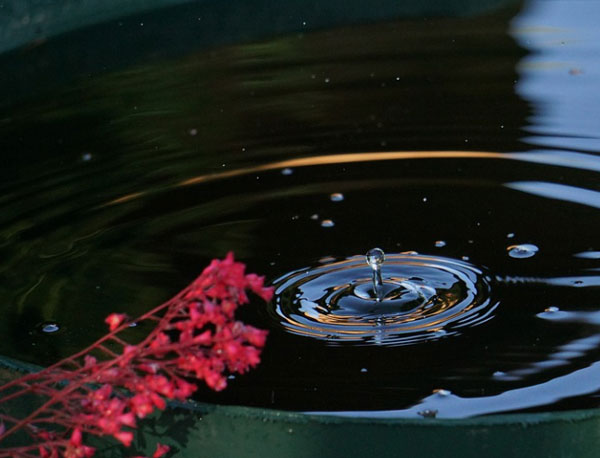Although 70 percent of the Earth’s surface is covered in water, only 2.5 percent of it is fresh water. Of that number only a fraction is accessible to use as drinking water. The remainder is encapsulated in ice caps and glaciers. With so very little fresh water on Earth and the demand increasing all the time, it makes sense to conserve as much as possible.
There are numerous ways to conserve water, including using a rain barrel. As far back as 2000 years ago, rainwater was collected in clay containers; they progressed to the rain barrel, which remained a common sight until the 1940’s. With the advent of modern plumbing rain barrels became unnecessary. Many people are now returning to this old-fashioned way of water conservation due to the rising costs of municipal water, use restrictions, and droughts.
A rain barrel is a container placed under the downspouts of the house’s gutters. It can consist of a simple barrel with an inlet on the top and an outlet at the bottom, or a more advanced system of numerous barrels that use pumps and flow controls. There are even adapters that can be placed on the downspout so that the barrel fills up, but then the overflow continues through the downspout and away from the foundation. Rain barrels can be purchased at many garden centers or on-line. A large food-grade container can be adapted for use. Trashcans should be avoided because they cannot withstand the water pressure long-term.
Rain barrels must have a cover or screen on top to prevent children, small animals and mosquitoes from getting in the water. Never use an open container because a child can drown in only a few inches of water. To avoid mosquito contamination, the rain barrel should be emptied in less than ten days. Simple rain barrels rely on gravity flow to work, so place the barrel slightly higher than the point of use. Rain barrels must be drained and disconnected before winter so that they don’t crack.
Harvesting rainfall helps the environment by not drawing on current water reserves and saves the homeowner money. Rainwater is naturally soft and is especially useful for watering landscapes and gardens or even washing your car. Keep in mind that some contamination can also be picked up from leaves, bird droppings, dust, other environmental factors, and roof and gutter materials. Collected rainwater should not be used for drinking water and may not be suitable for watering vegetable gardens.
Depending upon the size of your house and the amount of rainfall, a substantial amount can be collected. Approximately 550 gallons of rainwater can be collected for every 1000 square feet of collection surface per inch of rain. Even if you only collect enough to water a few tomatoes and houseplants, it is still conserving fresh water and saving yourself some money on the water bill.
For more information contact the Muskingum Soil and Water Conservation District
Our annual berry plant sale is going on now through April, 26th. | Order Online Today! • Our annual fish sale is going on now through April, 26th. Pickup day is May 7th. | Order Online Today! • We will be on Live At Noon on Tuesday, April 23, 2024 with Melissa.
